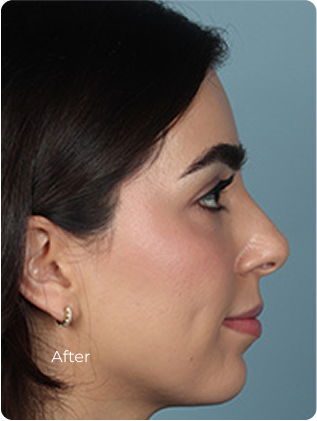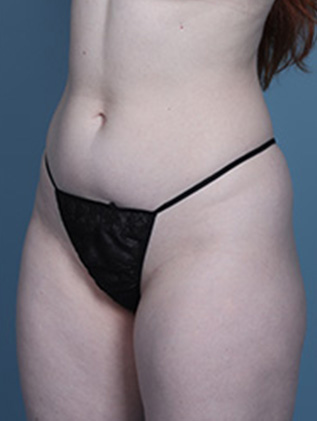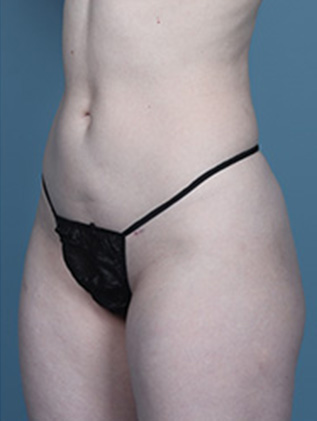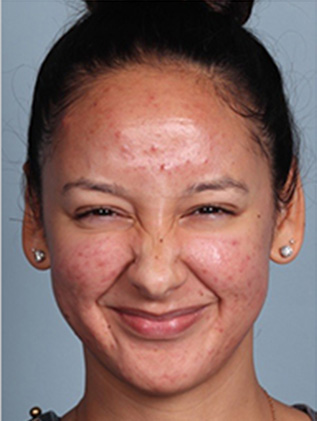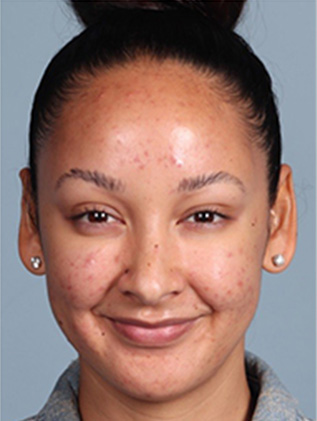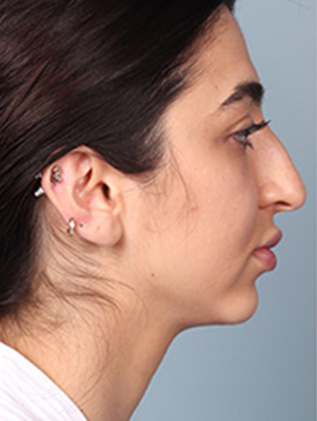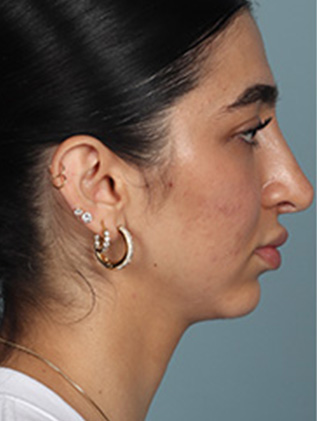By Dr. Luis Macias
While a facelift is often the gold standard for reversing visible signs of aging, achieving a youthful look requires more than just tightening the skin. Youthfulness is also defined by smooth, radiant, and healthy-looking skin— qualities that are often overlooked yet are essential for a refreshed, vibrant appearance. Skin tightening treatments work hand-in-hand with facelifts to improve skin texture and tone, delivering a smoother, more glowy complexion that complements the lifted, refreshed look. This article will explore how combining a facelift with targeted skin treatments can achieve the most natural and comprehensive rejuvenation, restoring both the structure and the surface of the skin for vibrant, lasting results.
What Facelifts Address and What They Don’t
Typically, a facelift can dramatically reduce sagging skin, redefine the jawline, and smooth deep wrinkles in the lower face, providing a youthful contour and lifting effect. The procedure specifically targets the lower two-thirds of the face, focusing on the cheeks, jawline, and neck. It can improve the appearance of jowls, loose skin around the neck, and deep nasolabial folds.
While facelifts effectively address deeper tissue structures and reduce sagging, they don’t significantly improve the skin’s surface, including fine lines, sun damage, and skin texture irregularities. A facelift works by repositioning and tightening underlying tissues. However, without additional treatments, the outermost layer of skin may still reveal signs of aging, like fine lines, crepey texture, or areas of discoloration.
Furthermore, the emotional aspects of aging can play a role in a person’s decision to seek a facelift. Many individuals experience dissatisfaction or discomfort with their appearance as they age, which can impact self-esteem and social interactions. Combining a facelift with skin-tightening treatments addresses the physical signs of aging and contributes to a greater sense of confidence and well-being. Patients often feel revitalized and more self-assured after seeing improved facial contours and skin quality.
Patients can enhance their results by combining a facelift with non-surgical skin tightening treatments. This approach allows the structural lift of a facelift to be paired with a renewed skin surface.
Types of Skin Tightening Treatments That Complement Facelifts
Skin tightening treatments are non-surgical or minimally invasive procedures designed to stimulate the production of collagen and elastin, which are essential for maintaining skin firmness and elasticity. As we age, collagen production declines, leading to sagging skin and the formation of wrinkles. By promoting collagen growth, skin tightening treatments can enhance skin elasticity, firmness, and smoothness, resulting in a more polished appearance after a facelift.
Several skin tightening treatments can be applied before or after a facelift, depending on the patient’s skin type and recovery plan. Here are some popular, relatively new, and advanced options:
Morpheus Ignite: Advanced Skin Tightening & Rejuvenation
Morpheus Ignite is an FDA-approved device offering effective skin tightening through targeted tissue contraction and shrinkage. This advanced technology improves overall skin quality, significantly reduces acne scars, and addresses textural irregularities. It also tackles fat accumulation in areas such as the jawline, cheeks, and under the chin, while lifting the pre-jowl area and reducing the appearance of stretch marks and cellulite.
Collagen Renewal and Aging
The body has two natural sources of collagen: the dermal layer (the deeper layer) and the epidermal layer (the surface layer). As we age, dermal collagen production declines, leading to skin laxity, wrinkles, and fine lines. Morpheus Ignite combats these signs of aging by combining radiofrequency (RF) technology with microneedling to trigger collagen and elastin production. Through micro-injuries in the top skin layer, Morpheus Ignite activates new collagen production and enhances blood flow, promoting nutrient-rich skin rejuvenation at a cellular level.
Key Benefits of Morpheus Ignite
- Improved collagen production: Stimulates the skin’s natural collagen and elastin, restoring firmness and elasticity.
- Reduction of wrinkles and fine lines: Smooth skin texture and diminished lines for a youthful appearance.
- Plumping of targeted areas: Addresses thinning areas like lips and eyebrows, giving a fuller, lifted look.
- Fast results: Noticeable improvements are often visible after just one session.
- Minimal downtime: A minimally invasive procedure requiring little to no recovery time.
- Enhanced contour and definition: Restores natural contours and promotes youthful skin structure.
- Reduction of acne scars and stretch marks: Aids in the healing of acne scars and fading of stretch marks.
- Combatting oxidation and photo-aging: Effectively counteracts damage from natural aging processes and sun exposure.
Quantum 10 Handpiece: Precision for Facial Rejuvenation
The Quantum 10 handpiece is specifically engineered for facial treatments within the Morpheus Ignite system. Its targeted radiofrequency technology focuses on thermal energy deeply, treating both surface and subdermal tissues to stimulate collagen production and tissue remodeling. This results in visibly firmer, smoother skin in delicate areas prone to sagging, making it ideal for reducing fine lines and revitalizing facial contours with heightened precision.
Morpheus Burst: Multi-Layer Rejuvenation
Morpheus Burst further enhances the treatment by delivering RF energy across multiple skin depths simultaneously. This multi-layered approach promotes tissue contraction and collagen renewal throughout superficial and deeper skin layers, achieving comprehensive tightening and improved skin resilience. Particularly useful for body treatments, Morpheus Burst effectively tackles stretch marks, cellulite, and areas with pronounced skin laxity, providing a powerful solution for overall skin rejuvenation.
Morpheus Ignite at Aesthetic MdR
At Aesthetic MdR, we are proud to be among the first practices in Southern California to offer this newest advanced Morpheus Ignite with its latest handpieces, Quantum 10 and Morpheus Burst, for skin tightening. These innovations deliver layered, targeted results that address each patient’s needs, ensuring long-lasting and natural-looking improvements for both face and body.
Laser Treatments
Laser treatments have become a cornerstone of modern aesthetic procedures, providing effective rejuvenation for various skin conditions with minimal discomfort and downtime. These advanced technologies utilize targeted laser energy to enhance the skin’s outer layers, effectively addressing fine lines, age spots, uneven pigmentation, and other signs of aging and sun damage.
Laser treatments are often an appealing alternative for individuals with busy lifestyles or those concerned about the time commitment of more invasive procedures. The ability to achieve significant results with quick, outpatient procedures makes them a popular choice among patients seeking a more youthful appearance without extensive recovery times.
Types of Laser Treatments and Their Unique Benefits
Among the available options, Halo is a notable treatment that blends non-ablative and ablative wavelengths to optimize results while minimizing recovery time. As a hybrid fractional laser, it allows quick healing by preserving the surrounding skin, making it safe and effective for all skin types. Patients often experience noticeable skin texture and tone improvements, with visible results within weeks.
In addition to Halo, there are other powerful laser treatments such as Fraxel, Forever Young BBL, and CO2 laser. These treatments also target various skin concerns, including fine lines, discoloration, acne scars, laxity, and large pores. They work by resurfacing the skin to enhance smoothness and radiance, utilizing the power of light therapy to stimulate collagen production and promote cell renewal.
One of the advantages of laser treatments is their versatility. Depending on individual skin conditions and concerns, practitioners can tailor the laser settings to provide the most effective treatment. This adaptability ensures that each patient receives a personalized experience, maximizing their results.
After surgical procedures like facelifts, laser treatments are crucial for refining the skin’s overall appearance. They help to seamlessly blend surgical results with an even, youthful skin tone. Timing is essential; typically, patients should wait at least 6 to 12 weeks after a facelift to allow the skin ample time to heal before undergoing additional laser treatments. This approach ensures optimal results and enhances the longevity of the surgical outcome.
Dermal Fillers
While injectables like fillers do not offer traditional skin tightening, they can complement facelift results by smoothing skin texture and filling in areas that may still show fine lines or volume loss. Fillers can restore subtle fullness, enhancing the refreshed look of a facelift.
Patients often seek dermal fillers as an immediate solution for addressing specific concerns, allowing for a quicker enhancement of their overall appearance. The convenience of filler treatments makes them an attractive option for those looking for a swift yet effective way to rejuvenate their look.
Types of Dermal Fillers and Their Benefits
Various types of fillers exist, each designed to target specific concerns. For example, RHA (Resilient Hyaluronic Acid) fillers are a family of hyaluronic acid-based dermal fillers that correct facial lines, dynamic wrinkles, and volume loss. Among these, RHA 2 is ideal for moderate wrinkles and enhancing thin lips, while RHA 3 addresses deeper wrinkles and facial folds, improving hollow cheeks. For those seeking added volume and facial contouring, RHA 4 focuses on the cheeks and overall facial structure.
Radiesse comprises tiny calcium hydroxyapatite (CaHA) gel microspheres, which provide instant plumping of facial wrinkles and lost volume. This filler also stimulates collagen production, leading to long-lasting improvements. Radiesse can be used on the face and hands to correct signs of aging.
Sculptra, which is more of a stimulant than a filler, is administered the same way as fillers. It utilizes poly-L-lactic acid (PLLA) to boost the body’s natural collagen production, gradually restoring lost facial volume while smoothing away wrinkles and folds. This filler is particularly effective for treating nasolabial folds and marionette lines.
Each type of filler works differently to achieve its effects. Sculptra stimulates collagen production through PLLA, gradually restoring volume and smoothing wrinkles as collagen develops over a few months. RHA fillers supplement the skin’s natural reserves of hyaluronic acid (HA), which retains moisture and provides a dewy, youthful appearance. HA can hold up to 1,000 times its weight in water, ensuring hydration and volume. Radiesse immediately plumps the target area with CaHA microspheres, promoting collagen production over time. Eventually, the body absorbs the CaHA, leaving only the natural collagen behind.
What to Expect from Your Dermal Filler Treatment
Dermal filler procedures are typically quick and straightforward. At Aesthetic MdR, master injectors perform treatments in a comfortable, private setting. The process generally begins with a consultation to discuss aesthetic goals and tailor a treatment plan. Local anesthesia or a topical numbing cream is applied to enhance comfort during the procedure. The injector places precise amounts of the filler into specific areas of the face or hands, and depending on the treatment area, the procedure may take about 15 to 30 minutes.
Recovery and Results Timeline for Dermal Fillers
One of the key advantages of dermal fillers is the minimal downtime associated with them. Patients can typically return to their normal activities immediately after treatment. Some common post-treatment effects include mild swelling, bruising, or tenderness, which usually resolve within a few days. Sculptra results appear gradually over several months as collagen builds up, with effects lasting up to two years. RHA fillers and Radiesse often provide immediate improvements, with full results visible within a week. Their longevity varies, generally lasting from one to two years before maintenance treatments are necessary.
Radiofrequency Treatments
Radiofrequency (RF) treatments have gained popularity for their ability to tighten skin without surgery. These treatments work by delivering RF energy to the skin, stimulating collagen production, and tightening the underlying tissue. One of the key benefits of RF treatments is that they can be combined with other procedures, including facelifts, to enhance the overall outcome.
The convenience and effectiveness of RF treatments make them appealing to individuals seeking non-invasive options for skin tightening. Many patients appreciate the ability to achieve noticeable results without the need for surgery or extensive recovery time.
One such RF treatment is Ultherapy, which uses ultrasound technology to target deep layers of skin, stimulating collagen and elastin production. This non-invasive procedure can be performed on the brow, neck, and under the chin.
Another option is Exilis, which combines RF energy with ultrasound to tighten skin and reduce fat. It can be applied to various areas of the body, including the abdomen, thighs, and arms.
Benefits of Combining Skin Tightening Treatments with Facelifts
Pairing facelifts with skin tightening treatments provides synergistic effects, offering a balanced and natural look that’s challenging to achieve with either treatment alone. Here’s a breakdown of the benefits:
Enhanced Skin Texture and Tone
While a facelift lifts and repositions, skin tightening treatments target the surface layer, improving skin tone, texture, and radiance. This combination leads to a natural-looking, youthful complexion.
Increased Longevity of Facelift Results
Skin tightening treatments stimulate collagen, which can help maintain skin elasticity longer. This effect helps facelift results last, as collagen support mitigates new sagging or laxity over time.
Comprehensive Anti-Aging Results
Facelifts address structural aging, while skin tightening treatments improve superficial aging signs like fine lines and pigmentation. Together, they provide an all-around rejuvenated appearance.
Faster Recovery and Improved Healing
Certain skin tightening treatments aid in circulation and lymphatic drainage, supporting the healing process after a facelift. This results in faster healing, with less swelling and a reduction in visible scarring.
Ideal Candidates for Combined Treatments
The ideal candidate for combining skin tightening treatments with a facelift is typically someone with mild to moderate skin laxity, fine lines, or textural issues. This combination is suitable for individuals looking to maintain facelift results over the long term or who may have aging signs that are not fully addressed by a facelift alone.
Age can also be a factor. Younger patients, or those in their late 40s or 50s, might combine these treatments preemptively to avoid a second facelift as they age. Patients with significant skin laxity or very fine, delicate skin may need a customized plan. The choice to consider early intervention, as discussed in The Ideal Age for a Facelift, can help maintain a youthful appearance and may lead to more natural results. However, patients with significant skin laxity or very fine, delicate skin may need a customized plan to address their needs effectively.
Post-Facelift Skin Maintenance with Skin Tightening Treatments
For patients with a facelift, ongoing skin maintenance can keep results looking fresh and youthful for years. Here are some best practices for post-facelift skin tightening:
RF Treatments Every 6-12 Months
Scheduling RF treatments 6-12 months post-facelift and at regular intervals afterward can help preserve facelift results by supporting collagen production and preventing early signs of new laxity.
Laser Touch-Ups as Needed
Laser treatments can be repeated every 1-2 years to maintain skin smoothness and reduce surface imperfections. Regular touch-ups help prevent the accumulation of age spots or fine lines.
Risks and Considerations
As with any procedure, combining facelifts with skin tightening treatments comes with considerations. Here are a few important points:
Timing and Healing
It’s critical to allow adequate healing time between procedures. Skin tightening treatments should typically be delayed until several weeks or months after a facelift to avoid overstressing healing tissues.
Side Effects and Sensitivities
Some treatments, like laser and RF, may result in redness, swelling, or irritation, particularly when performed too soon after a facelift. To avoid these complications, patients should work with qualified professionals who can customize treatment plans.
Selecting a Skilled Practitioner
A qualified practitioner ensures that the treatments complement each other without overextending or damaging delicate skin. Patients should choose providers experienced in both surgical and non-surgical anti-aging techniques to achieve the best outcomes.
Frequently Asked Questions
Should I have skin tightening treatments before or after my facelift?
Skin tightening treatments can be performed both before and after a facelift. Many patients choose to have non-surgical procedures prior to surgery to enhance their overall results. After a facelift, it’s generally recommended to wait at least 6-12 weeks before undergoing any skin tightening treatments to let the skin properly heal.
Are there any risks associated with combining facelifts and skin tightening treatments?
As with any procedure, there are risks, such as temporary redness, swelling, or irritation from skin-tightening treatments. It’s crucial to consult with a qualified practitioner who can customize your treatment plan and determine the best timing to minimize these risks.
How long do the results of skin tightening treatments last?
The longevity of results from skin tightening treatments varies by type. For instance, results from Morpheus Ignite can last several months to over a year, while laser treatments and fillers may need touch-ups every 1-2 years. Regular maintenance treatments can help prolong results.
Can skin tightening treatments improve the effects of a facelift?
Absolutely! Skin tightening treatments target the outer layer of the skin, addressing concerns like fine lines and uneven texture, which a facelift alone may not fully resolve. This combination results in a more polished, youthful appearance and enhances the longevity of facelift results.
To sum up
Incorporating skin tightening treatments alongside facelifts offers a comprehensive approach to achieving a youthful and rejuvenated appearance. While a facelift effectively repositions and tightens underlying structures, skin tightening treatments enhance the outer layer of the skin, addressing concerns like fine lines, texture irregularities, and uneven tone. This synergistic combination not only results in a more polished and vibrant look but also prolongs the benefits of the facelift, ensuring lasting results.
For individuals considering these combined treatments, it’s essential to work with experienced professionals who can create a tailored plan based on skin types and concerns. By taking proactive steps, such as scheduling maintenance treatments and adhering to post-procedure care, patients can enjoy their refreshed appearance for years.
Ultimately, the journey to maintaining youthful skin is not merely about lifting and tightening; it’s about nurturing the overall health and vitality of the skin. With the right combination of surgical and non-surgical treatments, individuals can achieve their aesthetic goals, feeling confident and radiant at every stage of life.



